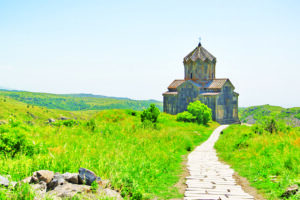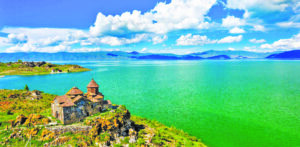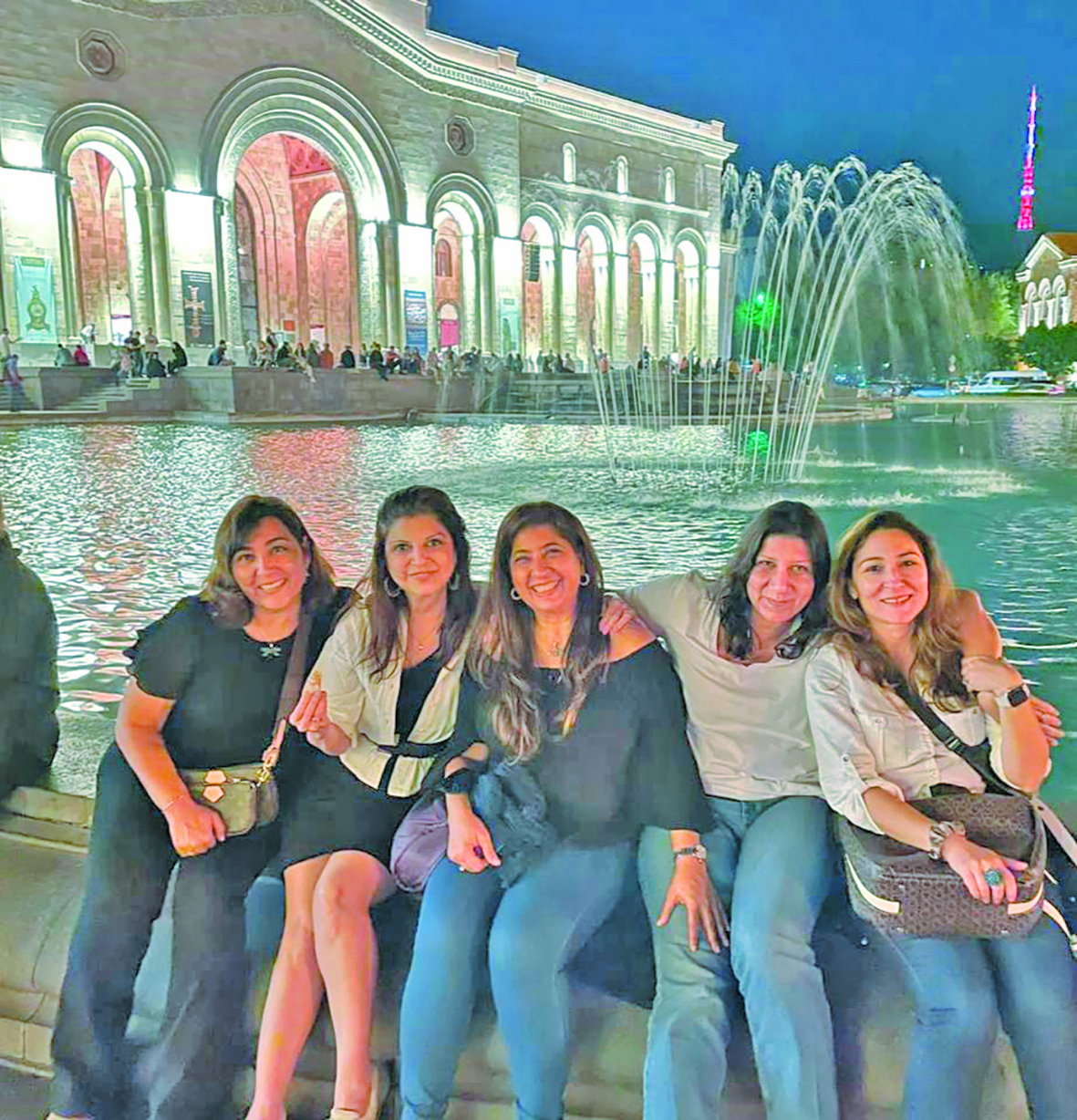 Part of the former Soviet republic, located in the Caucasus region between Asia and Europe, Armenia is known for its landscapes, cuisine, culture and history. The first country to adopt Christianity, it’s defined by some of the oldest religious sites including the Greco-Roman Temple of Garni and 4th century Holy Echmiadzin Cathedral, headquarters of the Armenian Church.
Part of the former Soviet republic, located in the Caucasus region between Asia and Europe, Armenia is known for its landscapes, cuisine, culture and history. The first country to adopt Christianity, it’s defined by some of the oldest religious sites including the Greco-Roman Temple of Garni and 4th century Holy Echmiadzin Cathedral, headquarters of the Armenian Church.
Dilijan – a resort town – was quaint and beautiful with 19th century architecture, dotted with monasteries. We drove to Haghartsin (in the Tavush Province), a 10th century monastery, completely surrounded by lush beech forests, of Armenia. Haghartsin is a monastical complex, high up in the mountains, with eagles everywhere, which is why the name is the literal translation of ‘games of eagles’ in Armenian.
Leaving Dilijan, we passed through the tunnel which unfolds the blue Pearl of the Armenian lake Sevan – a definite highlight of the trip. Set on a narrow peninsula, Lake Sevan sits atop a plateau and is considered one of the world’s largest sweet-water lakes, at 1,897 meters above sea level. Many Armenian legends are attributed to this lake.
 Our base was Yerevan – the capital city boasting of rich history, diverse culture and stunning architecture. One of the world’s oldest cities dating back to the 8th century BC, Yerevan is also called the Pink City due to the stone Tufa or Tuff used elaborately. History and culture walk hand in hand with a modern upbeat pulse. The Opera House is a must-see with its open-air museum. Climbing up called for some effort but the hike was well worth it! A visit to the Megerian carpet museum gets you to discover the art of carpet making, with a grand collection of carpets from Armenia and other countries displayed.
Our base was Yerevan – the capital city boasting of rich history, diverse culture and stunning architecture. One of the world’s oldest cities dating back to the 8th century BC, Yerevan is also called the Pink City due to the stone Tufa or Tuff used elaborately. History and culture walk hand in hand with a modern upbeat pulse. The Opera House is a must-see with its open-air museum. Climbing up called for some effort but the hike was well worth it! A visit to the Megerian carpet museum gets you to discover the art of carpet making, with a grand collection of carpets from Armenia and other countries displayed.
If this city was awe-inspiring and stunning in the day, she was simply seductive and more beautiful in the night. ‘Republic Square’ (formerly ‘Lenin Square’) is the heart of the city, with musical fountains and colonnaded buildings in pink and yellow tuff, built in a neoclassical style – surely one of the world’s finest central squares.
The next day we visited the Geghard Monastery, which is hewn from a cave, and contains numerous churches and tombs, most of them cut into the rock, which illustrate the peak of Armenian medieval architecture. The complex of medieval buildings is set into a landscape of great natural beauty, surrounded by towering cliffs at the entrance to the Azat Valley. ‘Geghard’ (originally ‘Geghardavank’) means ‘The Monastery of the Spear’, and is registered in the UNESCO World Heritage list.
We visited the Garni Pagan temple, dating back to the 1st Century, built by Armenian King Tiridates, and dedicated to the God of Sun – Mithra. Garni is the only Hellenistic temple existing presently in Armenia. The stairs of the temple are made such that everyone ascending the stairs is condescending to the God of Sun. Armenians shared Zoroastrian entities with Persia and worshipped fire as an ultimate gift from the gods. However, after adopting Christianity this beautiful temple lost its significance and the fortress of Garni became a summer residence of Kings. At lunch, we learned the art of making lavash – local Armenian bread, now popular worldwide.
The Symphony of Stones or Basalt Organ is another must see. It’s a deep gorge in the canyon – a natural monument located in the Azat River, in Garni village. It comprises huge, symmetric hexagons and pentagon basalt columns, nearly 50 meters high, which appear to be hand made.
 We then headed to Saghmosavank Monastery located atop the yawning gorge carved by the Kasakh River. A Greek-cross style monastery, built in the 13th century, it played a vital role in the religious, academic and cultural development of medieval Armenia. Next was Amberd – meaning ‘fortress in the clouds’, in keeping with its location – 2,300 meters above sea level!
We then headed to Saghmosavank Monastery located atop the yawning gorge carved by the Kasakh River. A Greek-cross style monastery, built in the 13th century, it played a vital role in the religious, academic and cultural development of medieval Armenia. Next was Amberd – meaning ‘fortress in the clouds’, in keeping with its location – 2,300 meters above sea level!
Enroute, we stopped at the Armenian Alphabet, founded in 2005, celebrating the 1,600th anniversary of the alphabet foundation. Armenia has had its alphabet, script and language – unique, original and different – a separate branch of the Indo-European language family. Armenian letters are radically different from other languages. Besides Armenian, Russian and English are also widely used. A vibrant country indeed with much to offer, my only suggestion would be, just as fine wine, you need to linger, taste and savour its flavours at leisure!
- Walk Away! - 20 April2024
- Brain Power - 6 April2024
- Celebrating Our Iranian Brethren! - 16 March2024
